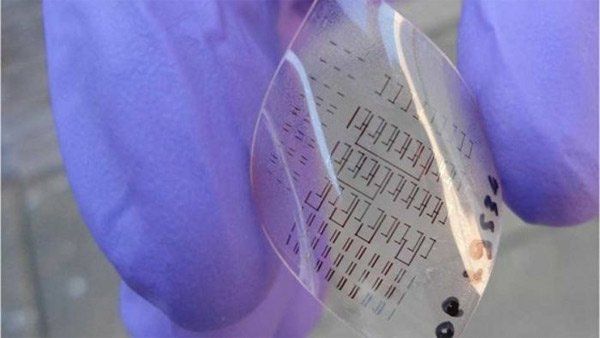Plastic Electronics will Change the Design of Everyday Things

A group of scientists led by Professor Henning Sirrinhausa (Henning Sirringhaus) of the Cavendish Laboratory at Cambridge University has developed a new process technology for printing electronic circuits on plastic. This brings us to the time when each of us can at home to print the desired chip, and in everyday life will include transparent “smart” materials such as artificial leather.
By “Artificial Skin” is meant a surface that can perceive and process information – the temperature of the object, surface texture, etc. The ideal use for it are the manipulators of robots, but these materials can be used in other areas: for RFID-tags, in transparent screens on the windshield of the car (to show the route, the current rate), the elements of clothing, etc.Moreover, many familiar household appliances – such as a calculator – you can print almost entirely of plastic. Instead of the body, the buttons and the screen just different colors are applied to the relevant sections of the transparent substrate.
This will radically change the design of many electronic gadgets. Since the invention of plastic electronics in the late 1970s, invented a lot of ways on how to type active material in the polymer surface. In this case instead of silicon is used as a mixture of different organic and printed circuits can be at home on the printer of the relatively small size. Plastic Electronics still has not found wide commercial applications because of its very low speeds (a few hundred Hz) and high operating voltage (hundreds of volts).
Researchers from Cambridge have done in this area a real breakthrough: they created a device works relatively quickly and at low voltage. The secret of a new organic material, which greatly simplifies the fabrication process. The fact that the chips need to print two different active material, and a new substance has ambipolar characteristics. Paint on the basis of this material may be applied at a temperature slightly above room temperature. The rate of organic chip amounts to hundreds of kilohertz, and enough food for its 9-volt battery.Authors of scientific work are now working hard to reduce all the requirements for power supply – it is necessary for the mass of organic chips in everyday things.
Work of scientists at Cambridge University published a March issue of the journal Advanced Materials (Vol. 24, No. 12, pp. in 1558 -1565).
Shortlink:

Recent Comments